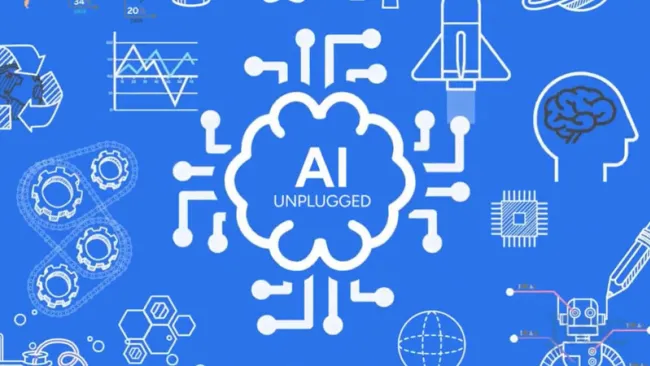Committed to frictionless customer experience? Look no further than conversation intelligence, an increasingly important strategy to enhance the customer journey and proactively manage the business.
Conversation intelligence is the process of collecting customer feedback and data from all customer support channels and integrating it with first- and third-party data to drive deeper customer insights using proprietary algorithms and generative AI.
The goal is to establish an always-on predictive analytics engine that can help contact centers reduce cost and friction throughout the customer journey, improve outcomes, and even flag brewing problems before they snowball and damage a brand’s reputation.
Why does conversation intelligence merit exploring?
Today’s customers have high and steadily rising expectations. They want effortless experiences like speedy resolution, straight talk, and minimal channel-jumping.
For organizations that fail to deliver on these expectations, the price can be hefty. Nearly 45% of customers will abandon a brand after just one poor experience, according to Qualtrics. It can be hard to pinpoint where friction exists but conversation intelligence’s always-on monitoring identifies patterns of complaints, sentiments, and key issues that need attention.
Contact centers are a proving ground
For years, first contact resolution (FCR) has been a vital metric to measure contact center success. While this is still a valuable indicator, it’s one-dimensional. Forward-thinking companies think more broadly about the series of conversations that play out over time and choose to think proactively by focusing on next-issue avoidance instead.
For example, a customer who buys a computer might call for assistance logging in for the first time. But we know there are likely to be more support issues that arise at a later point, like setting up an email account or downloading software. Conversation intelligence can help organizations understand the customer journey after a single conversation – and reveal opportunities to address the long-tail challenges that might come with a particular journey.

In the big push to automate as many aspects of the customer experience as possible, many brands turned to chatbots as the first line of defense. This can work well, but when customers have to explain an issue to a chatbot and then repeat that to a live associate, it’s incredibly frustrating. Conversation intelligence can help inform more personalized approaches to issue resolution by inspiring entirely new journeys for many customer problems, while directing customers with noted complex issues to start with a live associate, instead of a bot, from the very beginning.
To appreciate the full impact of conversation intelligence, let’s group outcomes into three categories: identification, integration, and enablement.
Identification: Put simply, intelligence serves as a diagnostic tool – always searching for potential topics, sentiments, and issues that are trending. Through established analytics dashboards or custom search tools, conversation intelligence empowers contact center leaders with the ability to track and identify macro-level trends in the contact center like never before. Conversation intelligence solutions monitor and identify operational, process, product, and customer issues as they are developing, while there is still time to resolve them.
Integration: Conversation intelligence captures customer sentiment at an aggregate level. Powered by generative AI, algorithms measure customer sentiment across all channels, from both established customer feedback tools and raw conversation data. This data becomes a powerful indicator to help with issue identification and generally keep a pulse on customer satisfaction.
Enablement: Because conversation intelligence connects customer conversation data to other critical customer data points, it also enables organizations to better understand events both before and after an interaction. This can inform new training strategies and journey enhancements that might not have been visible otherwise. Conversation intelligence can enable strategic decision-making, product enhancements, new product innovations, and targeted coaching and training.
Forget less is more — more is more
When it comes to establishing a conversation intelligence solution, the more quality data you have, the better outcomes you can expect. Today’s customer interacts with your brand across a multitude of channels. That means building a predictive analytics strategy around just one channel – say voice, for example – produces an incomplete picture of the customer experience and is unlikely to deliver meaningful insights.
Think about your customer data landscape like a dart board. At the bullseye are the actual conversations you’re having with your customers. These conversations might be analyzed from chatbot transcripts, call recordings, social media interactions, digital messages, and other channels.
Focusing exclusively on these direct engagements at the bullseye means the insights your conversation intelligence solution generates will mostly be reactive ones. However, by aiming for other areas of the dartboard, you can begin to unearth new ways to score points with customers and meet your operational objectives – and achieve better outcomes than focusing on the bullseye alone. Arming your conversation intelligence solution with additional data sources, like transaction data and marketing touches, can help predict specific problems, situations, or circumstances you can proactively address for your customers before they reach out.
Real world wins in the contact center
It’s happening now. Conversation intelligence is already delivering on its promise in contact centers:
- Reveal hidden friction points: By deploying generative AI to parse incoming conversation data, contact centers automate the detection – and in some cases alleviation – of important friction points that may go undetected today.
- Refine training protocols: Where highly complex topics are identified, managers can organize training opportunities to support associates and simplify challenging conversations. Similarly, where topics tend to become emotional, managers can build routing strategies that forward these calls to associates who are most successful in these high-stakes situations.
- Anticipate shifts: Conversation intelligence monitors issues, sentiment, and complexity by stakeholder group on an ongoing basis. By monitoring product groupings and creating dashboards and notifications for their respective teams, contact centers can create a feedback loop that quickly alerts product managers to concerning changes in customer feedback so they can investigate and resolve small problems before they become big ones.
- Quality assurance: Contact center managers can automate quality assurance and measure the impact of new protocols on both customer behaviors and outcomes.
Let’s say a direct-to-consumer electronics brand noticed a significant increase in call volume and call duration over a specific week, but they’re not sure what triggered the spike. Since they have a conversation intelligence solution in place, they can search for trending customer topics, as well as the complexity and sentiment of these conversations.
In this case, a contact center manager notices many of these calls include references to overheating laptop batteries. Since these conversations appear to be complex, it could be worthwhile to identify a knowledge article strategy to better equip associates to respond to these problems efficiently. Better yet, it could trigger a notification to the product team, who can work quickly to address the specific cause of the issue and prevent a widespread product recall.
Friction leads to customer attrition. It’s that simple. That’s why it’s vital to leverage powerful customer experience solutions at the point of conversation. Conversation intelligence holds great potential to drive associate productivity, customer satisfaction, and real business value.















